If you’re a fan of apples, then you’re in for a treat! The Royal Gala Apple is a beloved variety that offers a delightful combination of sweet flavor and crispy texture. With its beautiful yellow/orange skin and red striping, this apple is as visually appealing as it is delicious. Whether you enjoy it fresh, cook it into recipes, or pair it with other apple varieties, the Royal Gala Apple is sure to please your taste buds.
Key Takeaways:
- The Royal Gala Apple is known for its sweet flavor and crisp texture.
- It has a beautiful yellow/orange skin with red striping.
- The Gala Apple is a popular variety worldwide and is available year-round.
- It was first bred in New Zealand in the 1930s.
- Gala Apples are versatile and can be enjoyed in various ways.
Origins of the Gala Apple
The Gala Apple, a beloved apple variety, has an intriguing origin story. It was first bred in New Zealand in the 1930s by orchardist J.H. Kidd. Kidd crossed two apple varieties – Golden Delicious and Kidd’s Orange Red – to create the Gala Apple. This crossbreeding resulted in a delightful apple with a unique flavor profile.
The Gala Apple is not genetically modified (GMO); rather, it is the product of naturally occurring genetic mutations. After its discovery, Gala trees were planted in various regions around the world. Growers then began the process of selective breeding to develop improved strains of Gala Apples.
The Genetic Journey of the Gala Apple
From its humble beginnings in New Zealand, the Gala Apple has become one of the most popular apple varieties worldwide. Its genetic journey showcases the ingenuity of orchardists and the marvels of nature. Today, we can enjoy the sweet and crisp Gala Apple thanks to the dedication and innovation of those who brought it to life.
| Gala Apple Origins | Gala Apple Traits |
|---|---|
| New Zealand (1930s) | Crisp Texture |
| Cross between Golden Delicious and Kidd’s Orange Red | Mildly Sweet Flavor |
| Not genetically modified (GMO) | Beautiful Yellow/Orange Skin with Red Striping |
| Naturally occurring genetic mutations | Floral Aroma |
Discovering the origins of the Gala Apple gives us a deeper appreciation for this beloved fruit. Its unique blend of flavors, distinct appearance, and versatile uses have made it a staple in households worldwide. Whether enjoyed fresh, baked into pastries, or incorporated into savory dishes, the Gala Apple continues to captivate apple lovers with its delightful characteristics.
What do Gala Apples taste like?
Gala Apples are renowned for their delightful taste, offering a unique combination of sweetness and acidity. When you take a bite into a Gala Apple, you’ll experience a burst of flavors that is sure to satisfy your taste buds.
The creamy, juicy white flesh of Gala Apples has a dense and fine texture, providing a satisfying crunch with every bite. The sweetness of Gala Apples is subtle, with hints of pear and vanilla dancing on your palate. You may also notice a gentle floral note reminiscent of sweet apple blossoms, adding to the overall flavor profile.
Gala Apples are known for their versatility, making them a popular choice for both fresh eating and cooking. Whether enjoyed on their own as a snack or incorporated into various recipes, Gala Apples bring their distinct flavor and texture to every dish.
Pairing Suggestions
Gala Apples pair exceptionally well with other apple varieties, creating a harmonious blend of flavors. Some recommended pairings include:
- Golden Delicious: Combining the sweetness of Gala Apples with the tartness of Golden Delicious creates a balanced taste.
- Honeycrisp: The crisp texture of Honeycrisp complements the creamy texture of Gala, resulting in a satisfying bite.
- Granny Smith: The tartness of Granny Smith apples provides a delightful contrast to the sweetness of Gala Apples.
In addition to pairing with other apples, Gala Apples can be used in a variety of recipes, from salads and pies to sauces and desserts. Their versatile flavor profile makes them a favorite choice for both sweet and savory dishes.
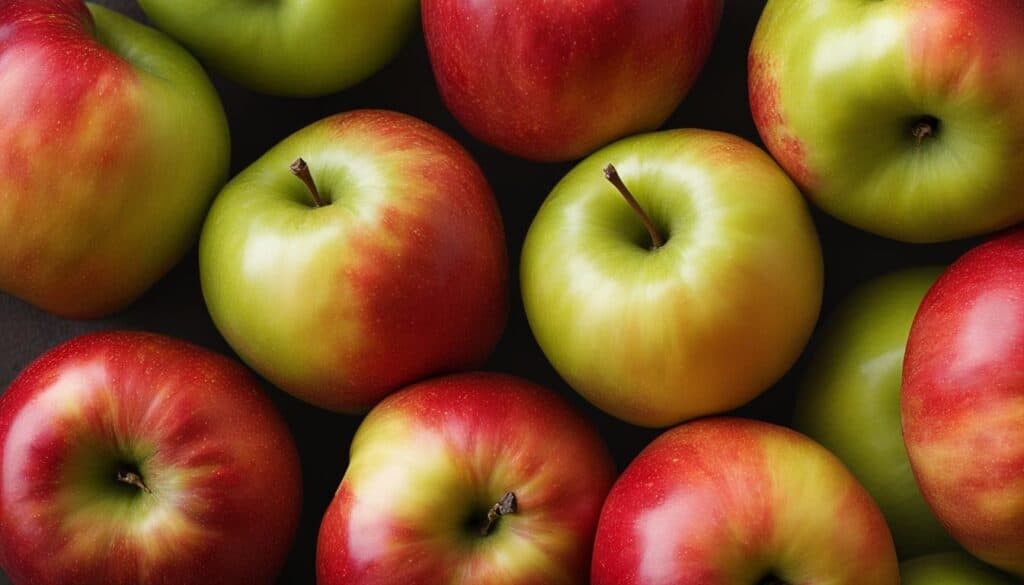
Gala Apple Flavor Profile
| Taste | Texture | Floral Notes |
|---|---|---|
| Sweet with a hint of acidity | Crisp and juicy | Subtle hints of pear and vanilla |
Harvest season for Gala Apples
Gala Apples are known for their deliciously sweet flavor and crisp texture, making them a favorite among apple lovers. But when is the best time to enjoy these delectable fruits? The harvest season for Gala Apples typically falls between mid-July and September, although the exact timing can vary depending on the region and climate.
In warmer areas, Gala Apples tend to ripen earlier in the season, while in colder climates, they may be ready for harvest in September. For example, in New Zealand, where the Gala Apple was first bred, the harvest season takes place from February to March. Orchardists carefully monitor the apples to ensure they reach their peak sweetness before picking them.
During the harvest season, orchards become a flurry of activity as farmers and workers carefully pick the ripe Gala Apples from their trees. It’s a labor-intensive process that requires skill and expertise to ensure each apple is picked at just the right time to capture its optimal flavor and texture.
Once the Gala Apples are harvested, they are sorted, packed, and shipped to supermarkets and grocery stores around the world. Thanks to their popularity and demand, Gala Apples are available year-round, providing apple enthusiasts with a consistent supply of these delightful fruits.
Harvest season for Gala Apples
| Region | Harvest Season |
|---|---|
| USA | Mid-July to September |
| Canada | Mid-July to September |
| China | August to September |
| Poland | August to September |
| Chile | February to May |
| New Zealand | February to March |
| South Africa | March to May |
Where are Gala Apples grown?
Gala Apples are cultivated in various regions around the world due to their adaptability to flexible growing climates. The major production areas for Gala Apples include:
- USA: Gala Apples are widely grown in the United States, particularly in Washington, New York, Michigan, and Pennsylvania.
- Canada: Canadian regions such as Ontario and British Columbia also contribute to Gala Apple production.
- Northern China: The cool climate of northern China provides favorable conditions for growing Gala Apples.
- Poland: Gala Apples are a significant part of Poland’s apple production, particularly in the regions of Lublin and Podkarpacie.
- Chile: Chile’s diverse climate allows for year-round production of Gala Apples, with the central and southern regions being the primary growing areas.
- New Zealand: The birthplace of Gala Apples, New Zealand continues to be a major contributor to worldwide production.
- South Africa: The Western Cape region of South Africa is known for its Gala Apple production.
These regions offer the ideal combination of climate, soil conditions, and expertise to cultivate high-quality Gala Apples. The popularity of Gala Apples has led to their availability year-round in grocery stores and supermarkets, ensuring consumers can enjoy their sweet and crisp goodness whenever they desire.
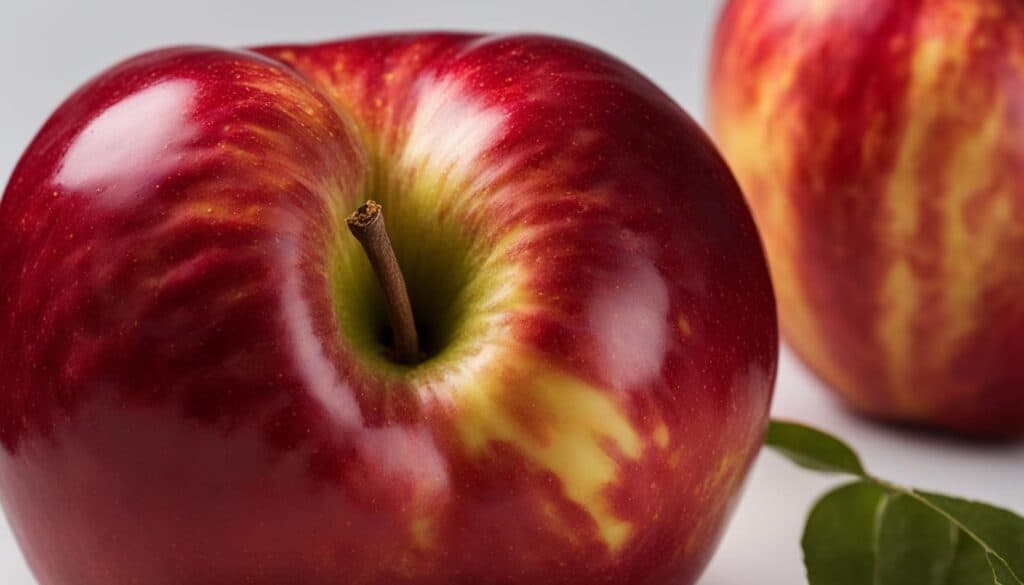
Table: Top Gala Apple Production Regions
| Region | Significant Production Areas |
|---|---|
| USA | Washington, New York, Michigan, Pennsylvania |
| Canada | Ontario, British Columbia |
| Northern China | Various provinces in the north |
| Poland | Lublin, Podkarpacie |
| Chile | Central and southern regions |
| New Zealand | Various regions |
| South Africa | Western Cape region |
Source: Own Compilation
Tips for Buying Gala Apples
When it comes to buying Gala Apples, there are a few tips to keep in mind to ensure you get the best quality and flavor. Whether you’re picking them up at the supermarket or a local fruit stand, here’s what you need to know:
1. Look for Freshness and Firmness
Choose Gala Apples that are firm to the touch and free from bruises or blemishes. Freshly harvested apples will have a crisp texture and vibrant color. Avoid apples that feel mushy or have soft spots, as these may indicate signs of spoilage.
2. Consider the Source
Local, freshly-picked Gala Apples often have a superior taste compared to imported ones. If possible, find out where the apples were grown and opt for locally sourced varieties. These apples are typically harvested at the peak of ripeness and have a longer shelf life.
3. Seasonality Matters
Imported Gala Apples from the Southern Hemisphere, such as New Zealand, are at their freshest from mid-March to early July. On the other hand, North American Gala Apples are available from late July through September. Knowing the harvest seasons can help you choose the freshest apples available.
By following these tips, you can ensure that you bring home delicious, high-quality Gala Apples that will satisfy your cravings and provide a tasty addition to your favorite recipes.
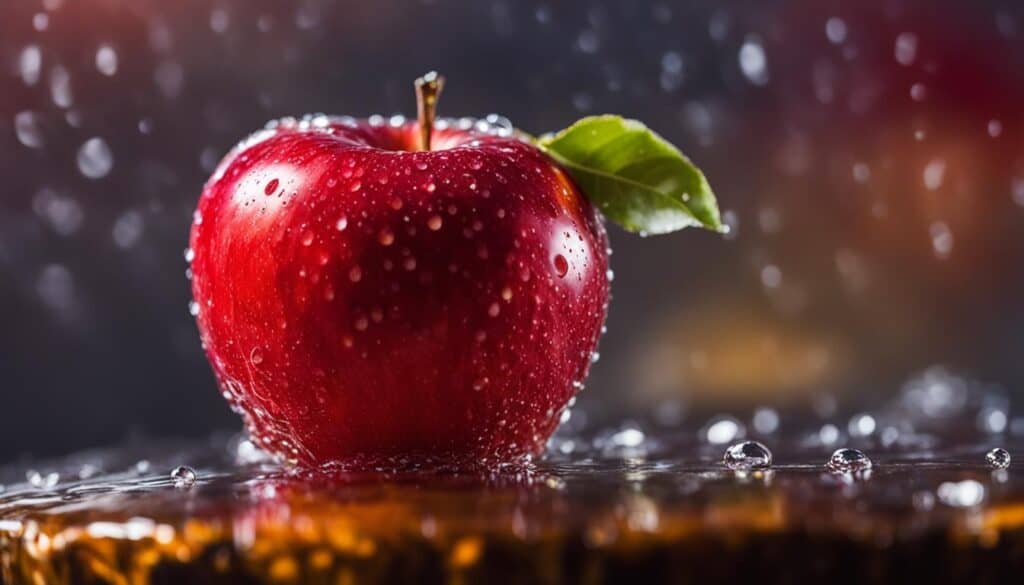
Tips for buying Gala Apples:
- Look for apples that are firm to the touch and have a bright, uniform color.
- Avoid apples with soft spots, bruising, or wrinkled skin.
- Consider buying organic Gala Apples if you prefer to minimize exposure to pesticides.
- Support local farmers by purchasing Gala Apples at farmers’ markets or joining a community-supported agriculture (CSA) program.
- Take advantage of bulk discounts and promotions to save money when buying Gala Apples.
By following these tips and being mindful of the prices, you can enjoy the delicious taste of Gala Apples without breaking the bank. So go ahead, add some sweetness and crunch to your grocery list, knowing that Gala Apples offer both flavor and affordability.
How to Grow Gala Apples
Growing your own Gala Apples can be a rewarding experience, allowing you to enjoy the taste of fresh, homegrown fruit. With the right techniques and care, you can successfully cultivate Gala apple trees in your own backyard. Here are some essential steps to follow:
- Choose a suitable location: Gala apple trees thrive in full sun, so select a spot in your garden that receives at least six hours of direct sunlight each day. The soil should be well-draining and rich in organic matter.
- Prepare the soil: Prior to planting, amend the soil by incorporating compost or well-rotted manure. This will help improve drainage and provide essential nutrients for the growing trees.
- Plant the trees: Dig a hole that is wide and deep enough to accommodate the root ball of the Gala apple tree. Place the tree in the hole, ensuring that the bud union (the swollen area where the variety is grafted onto the rootstock) is above the soil surface. Fill the hole with soil, gently firming it around the tree.
- Water and mulch: After planting, thoroughly water the tree and apply a layer of organic mulch around the base. This will help conserve moisture, suppress weeds, and regulate soil temperature.
- Prune and shape: Pruning is essential for maintaining the health and shape of your Gala apple tree. Remove any dead, damaged, or crossing branches, and thin out overcrowded areas to improve air circulation.
- Fertilize and protect: Feed your Gala apple tree with a balanced organic fertilizer in early spring and again in mid-summer. Protect the tree from pests and diseases by regularly inspecting for signs of damage and applying appropriate treatments as needed.
- Pollination: Gala apple trees require cross-pollination to produce fruit. Plant a compatible pollinator variety nearby, such as Golden Delicious or Red Delicious, to ensure sufficient pollination.
Remember, growing Gala Apples takes time and patience. It can take several years for a newly planted tree to bear fruit, but the reward of harvesting your own delicious Gala apples will make it all worthwhile. Happy growing!
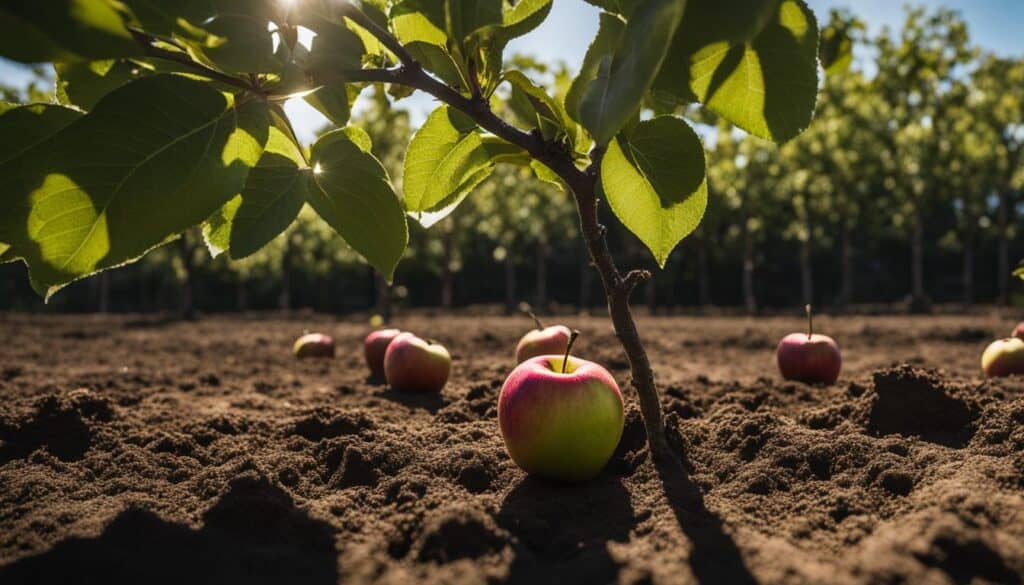
Gala Apple Planting Tips
Here are some additional tips to help you successfully grow Gala apples:
- Choose a Gala apple tree variety suitable for your climate zone. Consult with a local nursery or gardening expert for guidance.
- Provide adequate water for your Gala apple tree, especially during dry spells. Mulching helps retain soil moisture.
- Protect young trees from frost by covering them with frost blankets or using frost protection methods.
- Regularly monitor for pests like aphids, caterpillars, and apple maggots. Use organic pest control methods whenever possible.
- Harvest your Gala apples when they are fully mature but not overripe. Look for a deep color and a firm, crisp texture.
By following these tips and providing proper care, you can enjoy the satisfaction of growing your own Gala apples and savoring their delicious flavor straight from your own garden.
Shelf Life for Ripe Gala Apples
Gala Apples, known for their sweet flavor and crisp texture, have a decent shelf life that can be extended with proper storage. The storage conditions significantly impact the longevity of these apples. When stored at room temperature, Gala Apples can last for about a week or two. However, to maximize their freshness and keep them for a longer period, it is recommended to store them in the refrigerator.
When placed in the crisper drawer of the refrigerator, Gala Apples can remain fresh for 6-8 weeks. The cool temperature helps to slow down the ripening process and maintain their crunchiness. For extended storage, Gala Apples can also be kept in cold storage. In these controlled environments, Gala Apples can last up to 4 months.
In commercial controlled-atmosphere storage, Gala Apples can be preserved for as long as 8 months. These storage facilities control the temperature, humidity, and gas composition to slow down the natural aging process and maintain the optimal quality of the apples. It’s important to choose blemish-free apples for storage and keep them in cool conditions to prolong their shelf life.
| Storage Method | Shelf Life |
|---|---|
| Room Temperature | 1-2 weeks |
| Refrigerator (Crisper Drawer) | 6-8 weeks |
| Cold Storage | Up to 4 months |
| Commercial Controlled-Atmosphere Storage | Up to 8 months |
By following proper storage practices, you can enjoy the delicious taste and texture of Gala Apples for an extended period. Whether you’re using them in your favorite recipes or enjoying them as a healthy snack, Gala Apples are sure to bring delight with their sweet crunch.
Conclusion
In conclusion, the Royal Gala Apple is a beloved apple variety renowned for its delightful combination of a sweet flavor, crisp texture, and stunning appearance. Whether enjoyed fresh, incorporated into recipes, or paired with other apple varieties, Gala Apples never fail to satisfy your taste buds.
Available year-round, Gala Apples are grown in various regions worldwide, ensuring their accessibility to apple enthusiasts everywhere. Their versatility and popularity have made them a staple in grocery stores and supermarkets, offering a consistent supply for consumers.
With proper care and storage, Gala Apples can be enjoyed for an extended period. Store them in the refrigerator or commercial controlled-atmosphere storage to prolong their shelf life and maintain their exceptional quality. By selecting blemish-free apples and keeping them in cool conditions, you can savor the sweetness of Gala Apples long after they’re harvested.
FAQ
What is the taste of Gala Apples?
Gala Apples have a sweet flavor with a hint of acidity. They offer a crisp, succulent snap when eaten fresh and have subtle hints of pear, vanilla, and sweet apple blossoms.
When is the harvest season for Gala Apples?
Gala Apples are typically harvested from mid-July to September. The exact timing depends on the region and climate.
Where are Gala Apples grown?
Gala Apples are grown worldwide in regions with flexible growing-climate requirements. Major production areas include the USA, Canada, Northern China, Poland, Chile, New Zealand, and South Africa.
How much do Gala Apples cost?
Gala Apples typically cost around $2 per pound at grocery stores. Bulk discounts are available for larger quantities.
Can I grow Gala Apples at home?
Yes, home gardeners can grow Gala Apples in a variety of climates. Gala trees can tolerate both cool and warm apple-growing regions. Good pollinator varieties for Gala trees include Golden Delicious, Red Delicious, Honeycrisp, Granny Smith, Cox’s Orange Pippin, and Fuji Apples.
How long do ripe Gala apples last?
The shelf life of Gala Apples depends on the temperature. At room temperature, they can last for a week or two. In the refrigerator (crisper drawer), they can keep for 6-8 weeks, while in cold storage, they can last up to 4 months.

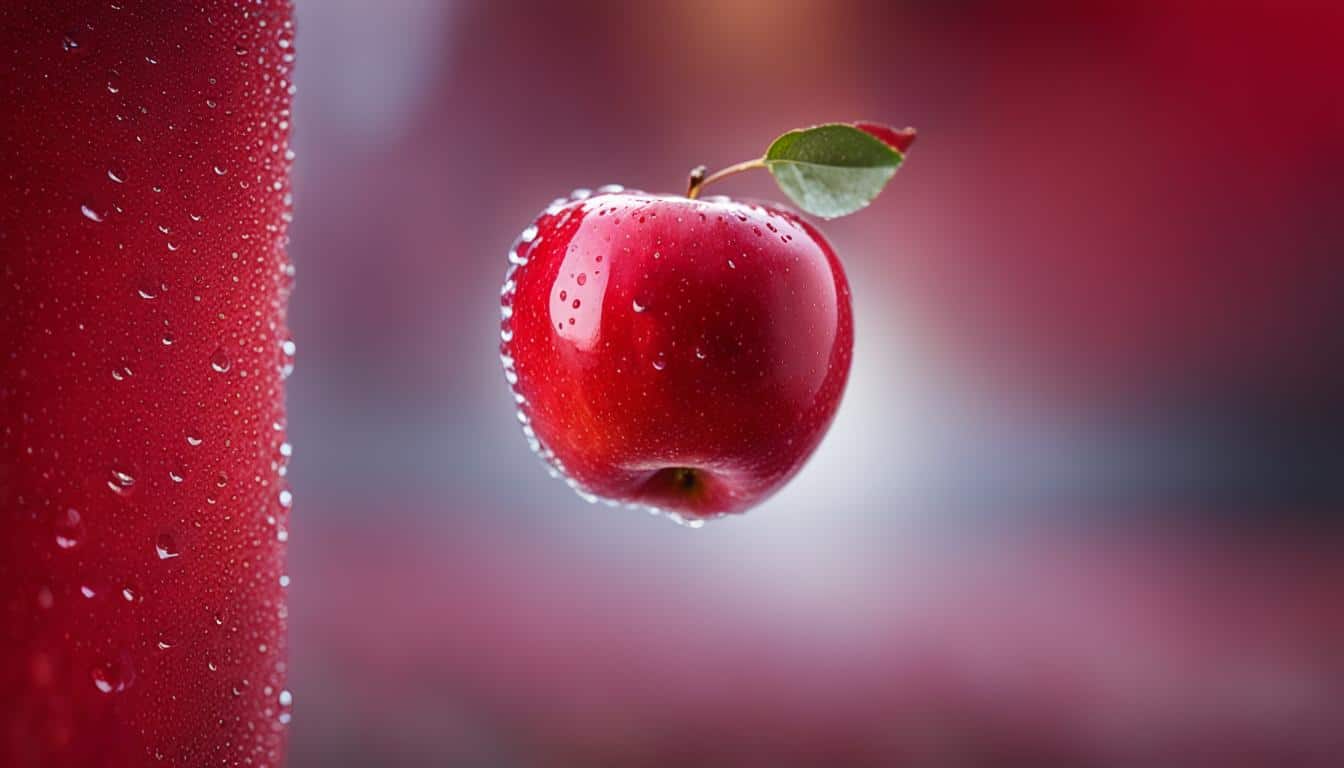



Leave a Reply